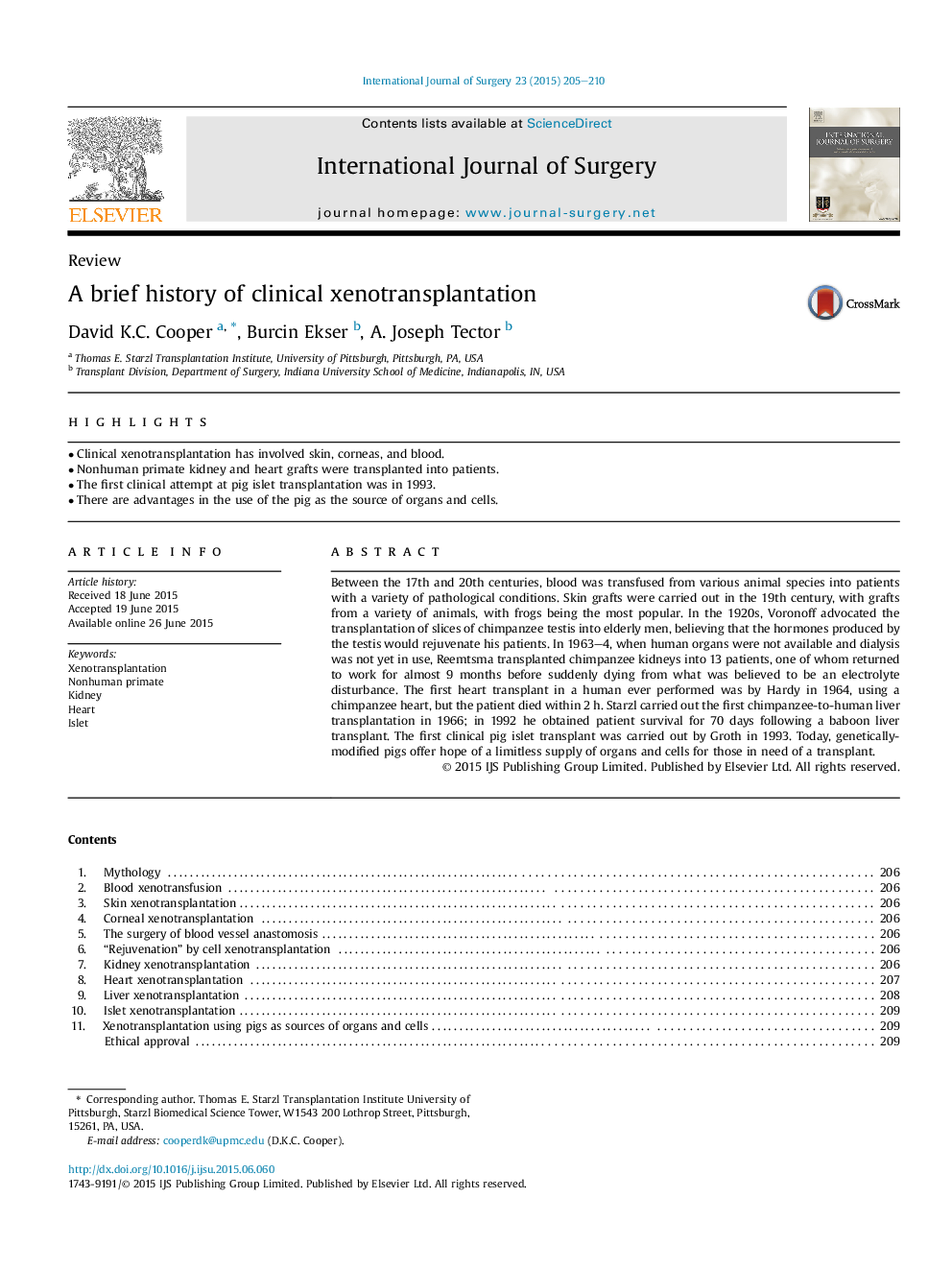| کد مقاله | کد نشریه | سال انتشار | مقاله انگلیسی | نسخه تمام متن |
|---|---|---|---|---|
| 4285714 | 1611967 | 2015 | 6 صفحه PDF | دانلود رایگان |

• Clinical xenotransplantation has involved skin, corneas, and blood.
• Nonhuman primate kidney and heart grafts were transplanted into patients.
• The first clinical attempt at pig islet transplantation was in 1993.
• There are advantages in the use of the pig as the source of organs and cells.
Between the 17th and 20th centuries, blood was transfused from various animal species into patients with a variety of pathological conditions. Skin grafts were carried out in the 19th century, with grafts from a variety of animals, with frogs being the most popular. In the 1920s, Voronoff advocated the transplantation of slices of chimpanzee testis into elderly men, believing that the hormones produced by the testis would rejuvenate his patients. In 1963–4, when human organs were not available and dialysis was not yet in use, Reemtsma transplanted chimpanzee kidneys into 13 patients, one of whom returned to work for almost 9 months before suddenly dying from what was believed to be an electrolyte disturbance. The first heart transplant in a human ever performed was by Hardy in 1964, using a chimpanzee heart, but the patient died within 2 h. Starzl carried out the first chimpanzee-to-human liver transplantation in 1966; in 1992 he obtained patient survival for 70 days following a baboon liver transplant. The first clinical pig islet transplant was carried out by Groth in 1993. Today, genetically-modified pigs offer hope of a limitless supply of organs and cells for those in need of a transplant.
Journal: International Journal of Surgery - Volume 23, Part B, November 2015, Pages 205–210